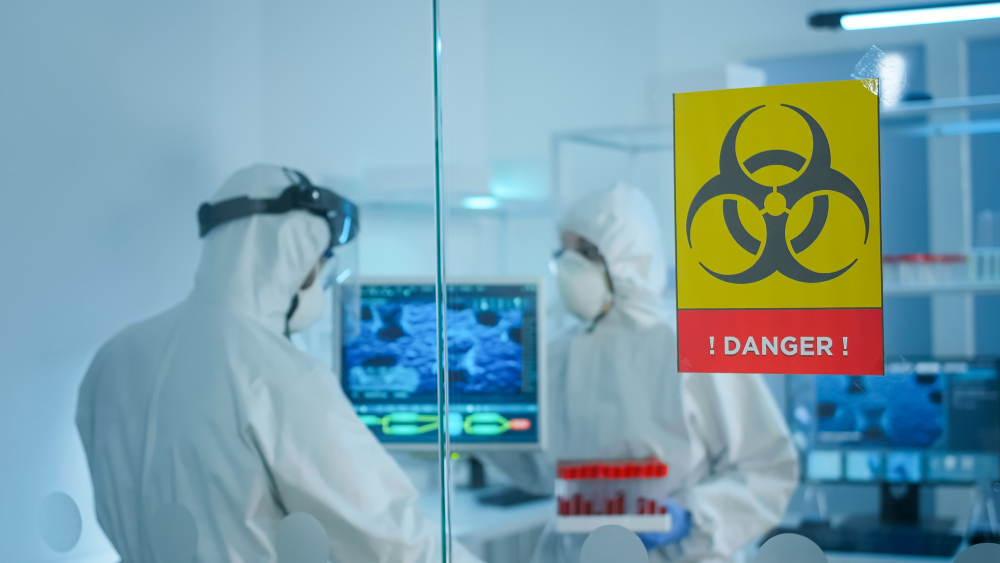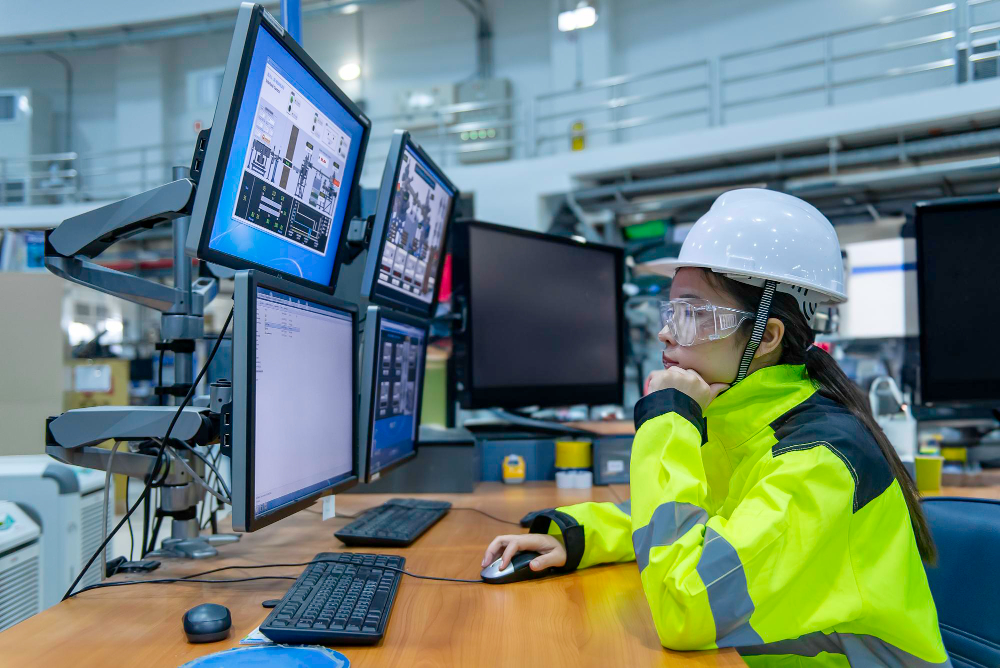Enhancing Workplace Safety with AI and IoT Technologies

See It In Action

Safety AI Software in Action
See how Visionify's Safety AI Software monitors workplace safety in real-time
Example Videos
Safety AI Software in Action
See how Visionify's Safety AI Software monitors workplace safety in real-time
Hard Hat Compliance in Construction
See how Vision AI detects hard hat violations in real-time
Hard Hat Compliance in Manufacturing
Vision AI PPE Compliance for Manufacturing
Key Takeaways
- Proactive Protection: AI and IoT shift safety from reactive to preventative approaches
- Real-Time Monitoring: Vision AI provides continuous surveillance for immediate hazard detection
- Smart Wearables: IoT devices offer personalized safety monitoring and alerts
- Predictive Analytics: AI identifies potential safety issues before incidents occur
- Automated Responses: Systems can initiate emergency protocols without human delay
The Evolution of Workplace Safety
Workplace safety is undergoing a revolutionary transformation. Traditional approaches relying on manual inspections and reactive measures are giving way to intelligent systems that can predict, detect, and respond to hazards in real-time. This shift represents not just a technological upgrade but a fundamental reimagining of how we protect workers across industries.
The statistics underscore the urgency of this evolution: according to the British Safety Council, the risk of workplace injury increases by 70% during an employee's first two months, with one in eight injuries occurring during a worker's initial weeks on the job. These sobering figures highlight the limitations of conventional safety training and oversight.
AI and IoT technologies are stepping in to bridge these gaps, offering continuous protection that doesn't falter due to human limitations like fatigue or divided attention. The result is a more comprehensive safety ecosystem that protects workers from their first day to retirement.
 Vision AI systems continuously monitor for safety hazards across industrial environments
Vision AI systems continuously monitor for safety hazards across industrial environments
Vision AI: The Watchful Guardian
At the forefront of this safety revolution is Vision AI—computer vision systems that analyze video feeds to identify potential hazards instantly. Unlike human observers who can only monitor limited areas and are subject to attention fatigue, Vision AI provides vigilant oversight across entire facilities 24/7.
Comprehensive Hazard Detection
Vision AI excels at identifying a wide spectrum of workplace dangers:
- Smoke and Fire Detection: Identifying the earliest signs of smoke or flames, often minutes before traditional sensors would activate
- Spill and Leak Monitoring: Detecting liquid accumulations that could create slip hazards or chemical exposure risks
- PPE Compliance: Verifying that workers are wearing required safety equipment in hazardous areas
- Unauthorized Access: Preventing entry to restricted zones by unauthorized personnel
- Unsafe Behaviors: Identifying dangerous work practices before they lead to injuries
The power of Vision AI lies in its ability to process visual information faster and more consistently than human observers, creating an unblinking safety net that catches hazards that might otherwise go unnoticed until an incident occurs.
Wearable Technology: Personalized Protection
While Vision AI provides facility-wide monitoring, smart wearables offer personalized safety protection that moves with each worker. These devices represent a significant advancement in individual safety monitoring:
Environmental and Biometric Monitoring
Modern safety wearables combine multiple protective functions:
- Toxic Gas Detection: Alerting workers to dangerous atmospheric conditions
- Temperature Monitoring: Warning of extreme heat or cold that could cause injury
- Ergonomic Tracking: Identifying movements that could lead to musculoskeletal disorders
- Fatigue Detection: Monitoring signs of worker fatigue that increase accident risk
- Location Tracking: Enabling rapid response during emergencies
These devices are particularly valuable for new employees in their vulnerable first months, providing an additional layer of protection during the highest-risk period of employment.
 Employee monitoring safety dashboard
Employee monitoring safety dashboard
Real-Time Monitoring and Automated Responses
The true power of AI and IoT safety systems lies in their ability to not only detect hazards but to initiate appropriate responses without human delay. These automated emergency response systems can:
- Halt dangerous equipment operations when hazards are detected
- Initiate evacuation protocols in affected areas
- Alert emergency responders with precise location information
- Activate suppression systems for fires or chemical releases
- Provide real-time guidance to workers during emergencies
By removing the delay between hazard detection and response, these systems significantly reduce the potential severity of incidents. In emergency situations where seconds matter, automated responses can mean the difference between a minor incident and a catastrophic event.
Predictive Analytics: Preventing Tomorrow's Accidents Today
Perhaps the most transformative aspect of AI in workplace safety is its ability to move beyond detection to prediction. By analyzing patterns in historical data, predictive analytics can identify conditions that frequently precede accidents, allowing for intervention before incidents occur.
These systems examine factors including:
- Environmental conditions associated with past incidents
- Equipment maintenance patterns and failure precursors
- Worker behavior trends that correlate with increased risk
- Operational variables that contribute to hazardous situations
This shift from reactive to predictive safety management represents a fundamental change in how organizations approach worker protection. Rather than focusing primarily on response and mitigation, predictive systems enable prevention—addressing the root causes of accidents before they manifest.
IoT for Environmental and Equipment Monitoring
Beyond personal safety, IoT sensors play a crucial role in monitoring the broader workplace environment and equipment health:
- Air Quality Sensors: Continuously measuring contaminant levels and ventilation effectiveness
- Structural Monitors: Detecting early signs of building or infrastructure deterioration
- Equipment Sensors: Tracking machinery performance to predict potential failures
- Environmental Controls: Maintaining safe temperature, humidity, and air quality levels
These interconnected systems create a comprehensive safety ecosystem that addresses both immediate hazards and developing risk conditions. By identifying equipment issues before failure occurs, IoT-based predictive maintenance not only prevents accidents but also reduces downtime and extends asset lifespans.
The Future of Workplace Safety
As AI and IoT technologies continue to evolve, the future of workplace safety looks increasingly proactive, personalized, and effective. Organizations that embrace these technologies are not only protecting their workers more effectively but also realizing significant operational benefits:
- Reduced accident-related costs and downtime
- Lower insurance premiums and workers' compensation claims
- Improved regulatory compliance and reduced fines
- Enhanced productivity through safer working conditions
- Stronger safety culture and employee confidence
The integration of AI and IoT into safety management represents more than just technological advancement—it signals a fundamental shift in how we approach workplace protection. By leveraging these tools, organizations can create environments where safety is woven into the operational fabric rather than added as an afterthought.
As these technologies become more accessible and affordable, they will increasingly become the standard rather than the exception, creating safer workplaces across industries and saving countless lives in the process.
Ready to transform your workplace safety with AI and IoT technologies? Contact Visionify today to learn how our intelligent safety solutions can protect your most valuable asset—your people.
Frequently Asked Questions
Find answers to common questions about this topic
Want to learn more?
Discover how our Vision AI safety solutions can transform your workplace safety.
Schedule a DemoSchedule a Meeting
Book a personalized demo with our product specialists to see how our AI safety solutions can work for your business.
Choose a convenient time
Select from available slots in your timezone
30-minute consultation
Brief but comprehensive overview of our solutions
Meet our product experts
Get answers to your specific questions
Related Articles
Subscribe to our newsletter
Get the latest safety insights and updates delivered to your inbox.


